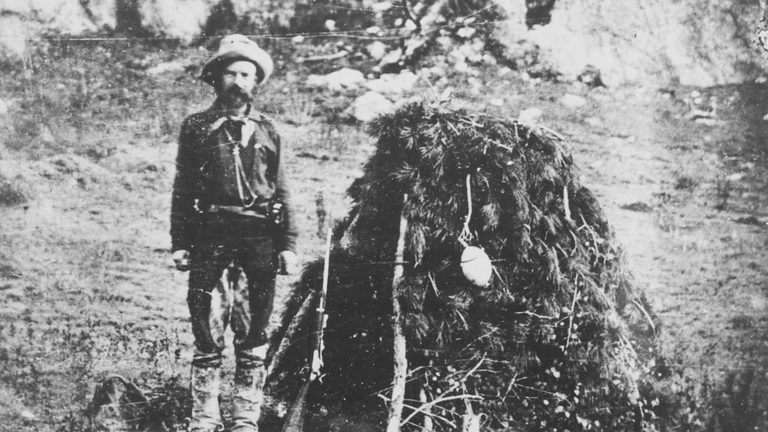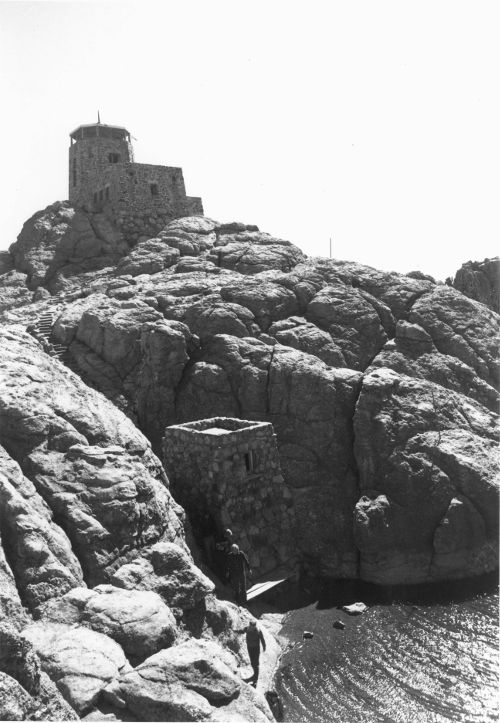When the Ghost Dance began appearing on Pine Ridge, the man who had replaced McGillycuddy as Pine Ridge Agent called in the U.S. Army. To this, McGillycuddy responded:
“If the Seventh-day Adventists got up on the roofs of their houses in their ascension robes to welcome the Second Coming of Christ, the whole U.S. Army is not rushed into motion.”
Confused and concerned, South Dakota Governor Mellette asked Valentine to go to the reservation on his behalf and assess the situation. McGillycuddy met with the Sioux and told them he was no longer in charge, but would try to help them in every way possible. Red Cloud stood up, pointed at his old enemy and said:
“That is Wasicu Wakan. For seven winters he was our Father. He said to me, “Some day you will say that my way was best for the Indian.” I will tell him now that he spoke the truth. He was a young man with an old man’s head on his shoulders and he never sent for any soldiers.”
McGillycuddy advised his successor to let the Indians practice their new religion until interest waned. He strongly suggested army troops leave the reservation and take their cannons with them, a recommendation that was rejected. Another letter from Valentine McGillycuddy from that period reveals much of his character and feelings towards the native people:
“If I were again to be an Indian Agent, and had my choice, I would take charge of 10,000 armed Sioux in preference to a like number of disarmed ones; and furthermore agree to handle that number, or the whole Sioux nation, without a white soldier.
Respectfully, etc., V.T. McGillycuddy.
P.S. I neglected to state that up to date there has been neither a Sioux outbreak or war. No citizen in Nebraska or Dakota has been killed, molested or can show the scratch of a pin, and no property has been destroyed off the reservation.”
In a series of miscommunications and hasty actions that followed, the tragedy known as the Wounded Knee Massacre occurred on December 29, 1890. Members of the Seventh Cavalry slaughtered approximately 150 generally unarmed Indian men, women and children while sustaining several casualties in their own ranks. Upon hearing the news of the massacre, McGillycuddy rushed from his home in Rapid City to tend to the wounded—his worst fears for the agency were realized.
During the 1890s McGillycuddy served at various times as Dean of the South Dakota School of Mines, Mayor of Rapid City, and President of a regional bank. When Fanny passed away in 1898, Valentine McGillycuddy left Rapid City for California.
Valentine later married his second wife Julia Blanchard, the daughter of a trader he had known at Pine Ridge. To this union was born a daughter, also named Valentine. At the age of 68, McGillycuddy came to the aid of the Army when he traveled to Alaska and other western states to treat victims of the influenza epidemic in 1917.
Doctor Valentine McGillycuddy passed away in San Francisco in 1939. In memory of his role in the history of the Black Hills, his ashes were entombed atop Black Elk Peak. At the summit of the peak he climbed back in 1875 a small brass plate on the stairway of the lookout tower is inscribed with the words:
Valentine T. McGillycuddy — Wasicu Waken 1849 – 1939
Wasicu Waken translates as Holy White Man, a tribute to his lasting friendship with the Oglala Sioux, and with all that he touched during his nearly 90-year journey.
Sources:
McGillycuddy-Agent by Julia McGillycuddy
Article by Robert E. Hayes/Deadwood Magazine, April 1999
Real South Dakota



